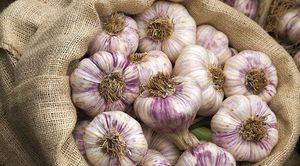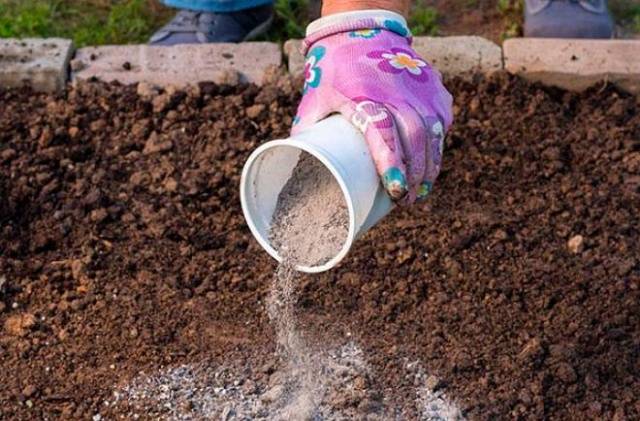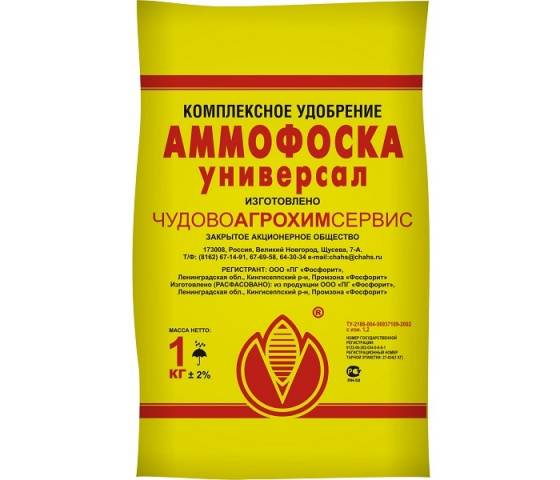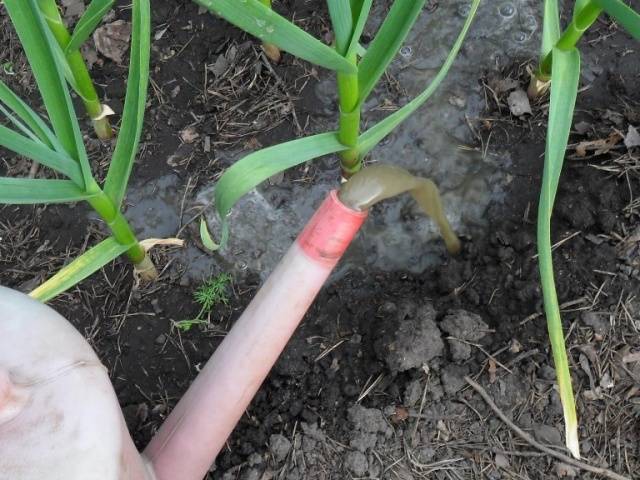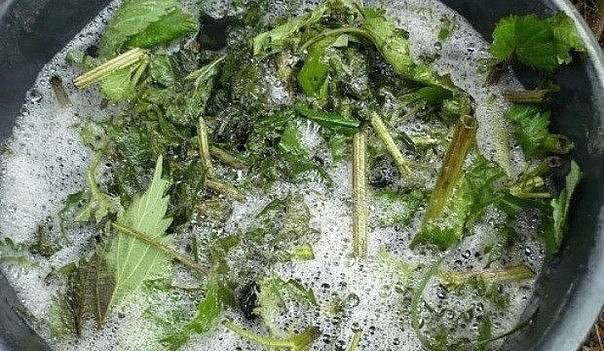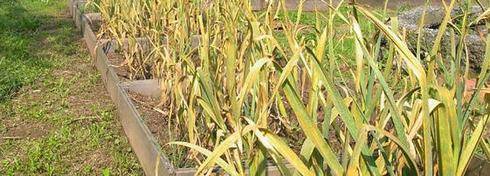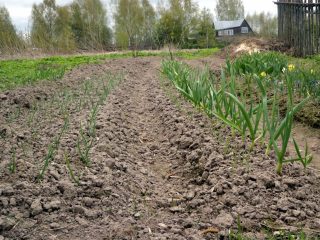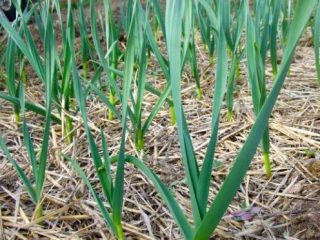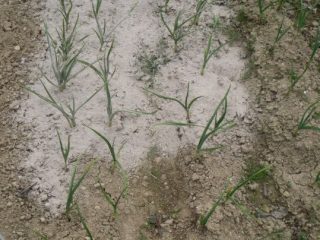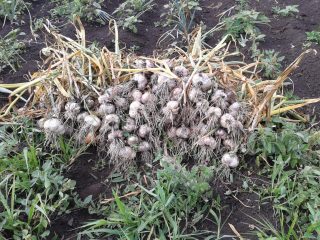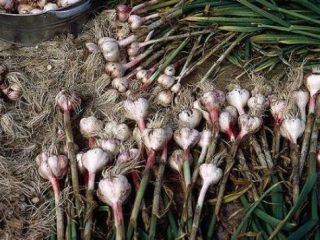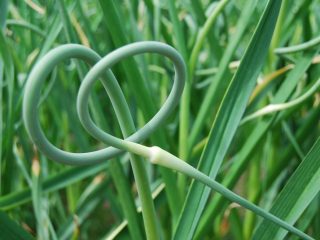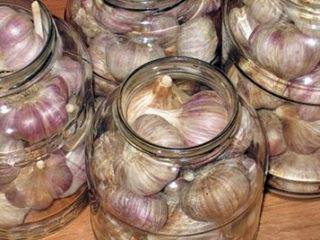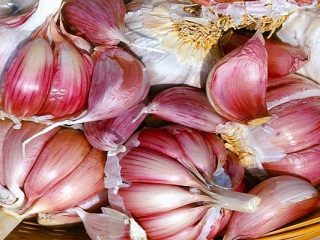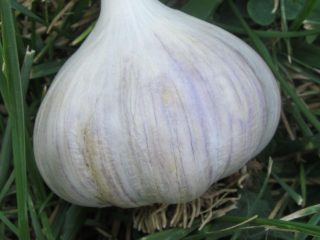Content
Despite the fact that garlic is always available for free sale, it is often grown in household plots and summer cottages. Garlic is a healthy vegetable widely used in cooking. By growing garlic at home, gardeners can be sure that it does not contain harmful substances. The vegetable is not capricious, so even novice gardeners get good results.
In cultivation, a distinction is made between winter and spring garlic. They have differences in planting and care. Today we will talk about spring varieties. Correct and regular feeding spring garlic during the growing season is of great importance for obtaining large and healthy heads. Novice gardeners are often interested in what fertilizers should be used, in what quantities it should be applied to the spicy vegetable, and at what time.
What fertilizers does garlic need?
To obtain a good harvest, garlic must be fed alternately with organic and mineral fertilizers.
Organic
Many gardeners do not want to use mineral fertilizers in their beds; they prefer to feed their plants, including garlic, with organic fertilizers:
- Wood ash for disinfection and nutrition of soil with microelements.
- Mullein and chicken droppings. This organic matter contains sufficient amounts of nitrogen, which is easily absorbed by plants.
- Compost. It contains a large amount of nutrients and microelements.
- Regular table salt for disinfection of garlic cloves, destruction of pests in the soil and saturation with microelements.
- Potassium permangantsovka to saturate soil and plants with manganese.
- Ammonia. It not only destroys harmful bacteria, but also saturates plants with nitrogen and accelerates the growth of cloves and heads.
Mineral fertilizers
Fertilizer of inorganic origin is used in the absence of organic matter or when its effect on plant development is insufficient.
What mineral fertilizers does garlic need:
- In potassium. They are necessary to increase productivity and strengthen plant immunity.
- Phosphorus-containing. To accelerate growth.
- Nitrogen-containing. For enhanced growth of green mass at the first stage of growing spicy vegetables.
- In complex fertilizers. They contain all the microelements necessary for plant growth and development.
Regardless of what type of fertilizer gardeners choose for spring sowing garlic or other cultivated plants, they must be used carefully.
This means that you cannot reap a rich harvest of the spicy vegetable.
Pre-planting fertilizing
Fertilizing spring garlic begins with preparing the beds. This plant is a big fan of organics. It must be applied in the fall. At least one bucket of compost or humus per square meter.
Some gardeners use potassium-phosphorus fertilizers when preparing the soil. The soil is well dug up. Fertilization in the fall is accompanied by abundant watering.
The vegetable receives a second feeding in preparation for sowing. After dividing into cloves and cleaning the dry scales, the planting material is soaked in salt water for two hours. Then in a one percent solution of potassium permanganate or copper sulfate for 2 hours. This treatment saturates with manganese or copper.
You can disinfect and feed the spicy plant with ash lye. To prepare it, add 400 grams of ash to two liters of water and boil for 30 minutes. Soak the cloves in the cooled and strained solution for a couple of hours. Ash not only disinfects planting material, but also saturates it with potassium and other microelements.
Immediately before planting, the soil is watered with a pink solution of potassium permanganate. The grooves can be treated with Cornerosta solution: 2 tablets are dissolved in a ten-liter watering can. After this, the cloves are planted at a distance of up to 8 cm and covered with soil. Water the top with clean water. No fertilizer is applied until the leaves appear.
Features of spring and summer feeding
Spring garlic is a big gourmet, it needs nutrition with various microelements. As a rule, root and foliar feeding is carried out.
Root feeding
During the entire growing season, spring-planted garlic is fed three times:
- The first time root feeding is carried out after 3 to 4 feathers appear on the plant.. You need to feed to increase green mass. The spicy vegetable can be poured with urea. 15 grams of the substance are needed per liter of water.Fertilizers are prepared at the rate of pouring at least 2.5-3 liters of fertilizer onto a square of plantings.
- The second feeding of garlic occurs at the end of May., but not earlier than 2.5 weeks after the first feeding. The most commonly used are nitroammophoska and nitrophoska. At this time, the spicy vegetable needs nitrogen, potassium, and phosphorus. All of them are present in these fertilizers in different quantities. When diluting nitroammophoska or nitrophoska per 10 liters of water, 2 tablespoons of the substance are needed. Up to 4 liters of fertilizer are poured onto the square. You can water the plants with nitrophoska if the tips of the feathers begin to turn yellow. Garlic is in dire need of the microelements contained in this fertilizer. In addition, fertilizers containing phosphorus or potassium enhance the plant's vitality in unfavorable conditions.
- The third time the spicy vegetable is fed during the filling period. The best fertilizer is superphosphate. To prepare a liquid nutrient solution, add 2 large spoons of fertilizer to a 10-liter watering can with water. The watering rate per square meter is identical to the first fertilizing.
What else can you feed garlic with?
Gardeners understand that a rich harvest of garlic can only be obtained with proper care and timely nutrition of the plants. It is not necessary to use chemicals in the garden. There are many organic fertilizers that this vegetable loves. In addition, they have been tested by more than one generation of gardeners and are completely safe for plants and humans.
Organic food recipes
If you do not want to use mineral fertilizers, you can use organic matter.
- This can be an infusion of bird droppings or mullein, or an infusion of herbs, such as nettle. 100 grams of organic matter are diluted in half a liter of water.If slurry is used to feed spring garlic, then one part of it is diluted in 6 parts of water. Fertilize at the root. You can feed spring garlic with these types several times.
- During clove formation, plants need potassium and phosphorus. If you feed it with an infusion of wood ash, it will replenish the vegetable’s need for these microelements. You can fertilize with ash several times. This will only make the garlic better.
Foliar feeding
Plants are able to obtain nutrients not only through the root system, but also through the leaves. The spicy vegetable is no exception. Root feeding is not always enough for it. Spring garlic also needs foliar feeding. It is carried out from a sprayer.
Most often, a spicy vegetable is fed this way in case of emergency, when the plant feels depressed due to a lack of nutrients and microelements. And root feeding has already been carried out and corresponds to the scheme. Moreover, feed the plants by leaves possible in between root fertilizers.
The nutrient concentration for foliar fertilizing is always lower than when fertilizing at the root. It is best to spray spring garlic in the evening in dry weather. If after you have fed the plant it rains on the leaves, then the procedure should be repeated a few days later.
Additional feeding
For foliar feeding You can use both mineral and organic fertilizers. The vegetable responds well to ash extract and pharmaceutical preparations: ammonia, potassium permanganate.
If the tips of the feathers begin to turn yellow, you need to urgently resuscitate them with any of the above substances:
- Ammonia (ammonia) when sprayed will help cope with nitrogen starvation. For a ten-liter watering can, three tablespoons of ammonia are enough. Spraying is carried out immediately after preparing the fertilizer. If after 10 days the spring garlic has not recovered, spraying can be repeated. This procedure not only delivers nitrogen through the leaves, but also helps get rid of pests, especially the secretive proboscis. But the most important thing is that nitrates when used ammonia plants do not accumulate.
- Pink solution of potassium permanganate You can feed the garlic during the formation of the head.
- Concerning wood ash, then it can be used several times throughout the growing season for both root and foliar feeding.
Features of growing spring garlic:
Let's sum it up
Growing spring garlic with large cloves is not so easy. It will be necessary not only to comply with agrotechnical measures, but also to carry out timely fertilizing. Then you will always have plenty of delicious seasoning. Garlic is also a natural healer.
Mysticism is also associated with garlic; for example, in the old days it was believed that a spicy vegetable hung in the house would repel evil spirits, evil spirits and vampires.
